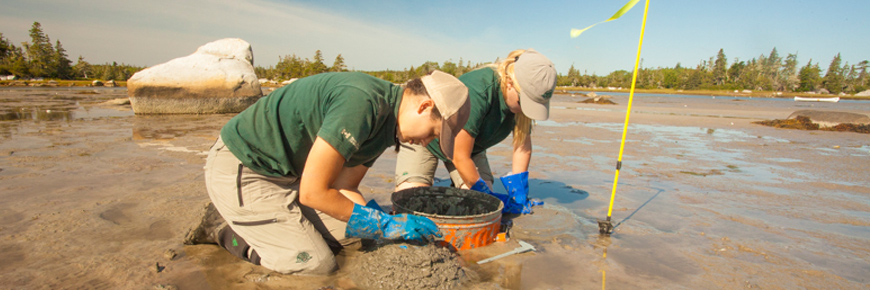
Conservation and restoration
Kejimkujik National Park and National Historic Site
Forest ecosystem conservation
Hemlock woolly adelgid is an invasive insect that is damaging and killing Eastern hemlock in Kejimkujik. Parks Canada developed an operational restorative...
Protecting Eastern hemlock in Kejimkujik
Slow the Spread was a five-year project (2019-2024) that focused on protecting priority Eastern hemlock stands throughout Kejimkujik.
Fire protection and restoration projects
Wildfire risk reduction projects, prescribed fires, and how you can help.
Coastal estuary restoration
Kejimkujik National Park – Seaside, on the Atlantic coast, protects a unique diversity of coastal habitats and communities in close proximity to each...
Freshwater ecosystem conservation
Kejimkujik's freshwater ecosystem is no stranger to environmental threats, including the enduring effects of acid rain, and invasive fish species,...
Protecting species
The recovery programs of some of the species at risk at Kejimkujik and Kejimkujik Seaside.
Conserving ecological integrity
An ecosystem has ecological integrity when...
- it has the living and non-living pieces expected in its natural region
- its processes (the engines that make an ecosystem work; e.g. fire, flooding, predation) occur with the frequency and intensity expected in its natural region
Ecological integrity should be assessed using science and Indigenous knowledge. These perspectives allow a deeper understanding known as “two-eyed seeing.”
Parks Canada's objective is to allow people to enjoy national parks as special places without damaging their integrity.
Restoring ecological integrity
Protected areas rarely contain complete, unaltered ecosystems, particularly in densely populated southern regions.
The ecological integrity of protected areas, and thus their ability to conserve biodiversity and natural capital, faces a number of challenges including invasive species, habitat fragmentation, downstream effects of air and water pollution, and global climate change, all of which contribute to degradation of protected area ecosystems.
Ecological restoration provides a way of slowing, halting or reversing ecosystem degradation.
- Date modified :